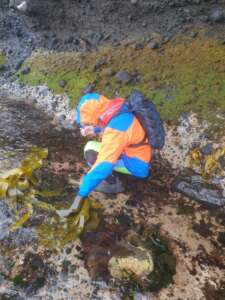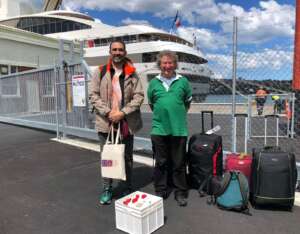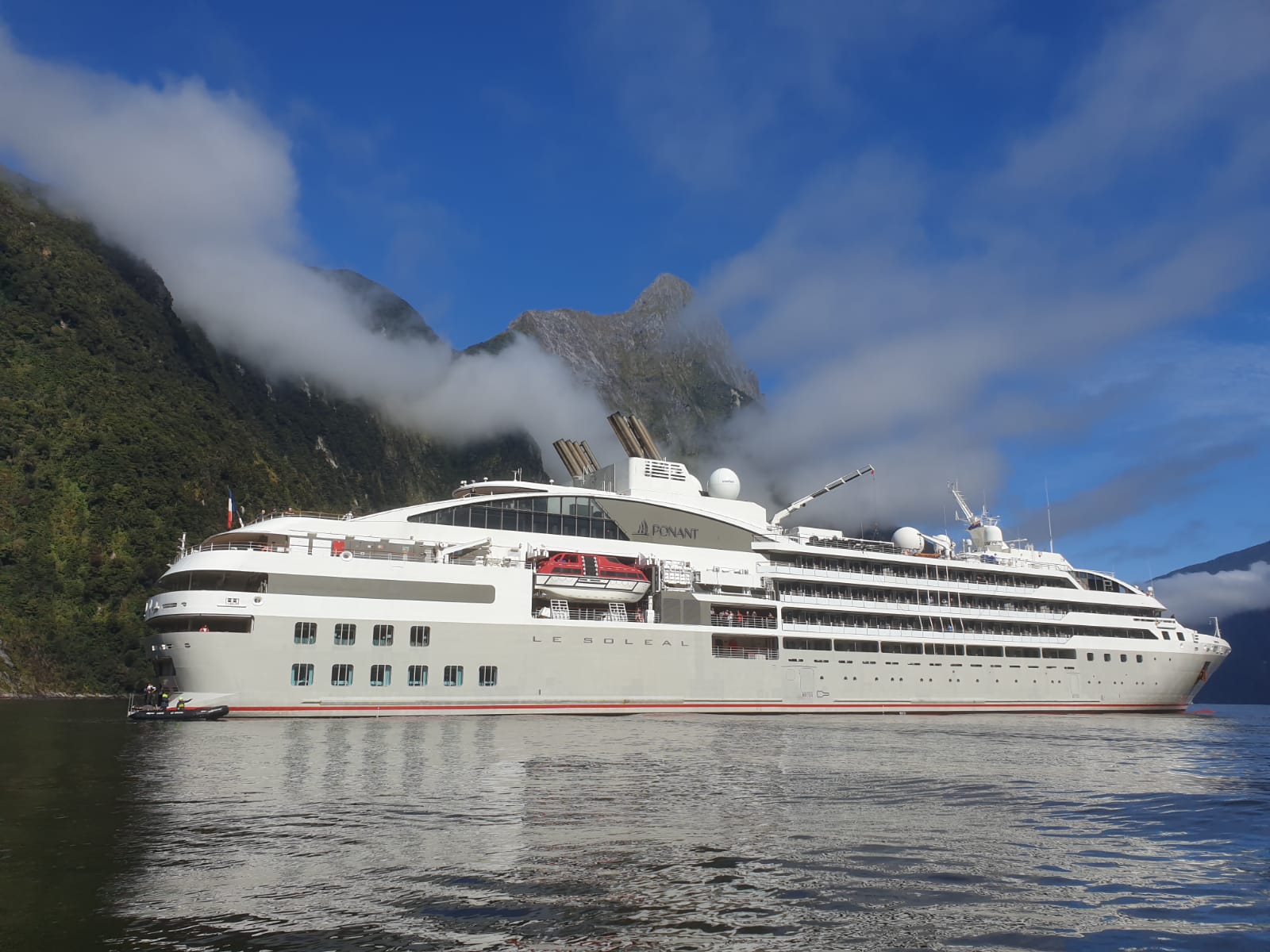Aboard the French research vessel Le Soléal (Ponant Cruises) collaborative effort between PhD. Claudio González-Wevar (UACh/BASE/IDEAL) and Professor Hamish G. Spencer (University of Otago) combines expertise in molecular genomics, evolutionary biology, and biogeography to investigate the distribution, diversity, and evolutionary history of molluscs in the Southern Ocean’s unique and understudied ecosystems. The expedition aims to advance the understanding of subantarctic molluscs through detailed collection and study.
Marking their tenth expedition, the BASE Millennium Institute and Ponant Cruises continue groundbreaking research, this time on Macquarie, Stewart and Auckland Islands, led by PhD. González-Wevar, head of the Laboratory of Antarctic and Subantarctic Molecular Genomics and Ecology (LAGEMAS-UACh). The project is also strengthened by the expertise of Professor Hamish G. Spencer, Sesquicentennial Distinguished Professor from the Department of Zoology at the University of Otago, New Zealand. Together, the team focuses on sampling and analyzing intertidal ecosystems, highlighting the importance of these islands, which host key study groups such as mollusc species Nacella (e.g., terroris, macquariensis), Laevilitorina (e.g., mcphersonae, venusta), and Margarella (e.g., violacea, macquariensis), among others.

“The participation of PhD. Hamish Spencer from the University of Otago has been invaluable. His expertise enabled us to access Stewart Island and collect specimens for our studies”, González-Wevar adds. The expedition covers rare and remote locations, including Traills Bay, the Auckland Islands in New Zealand, and Macquarie Island in Australia. These areas offer unparalleled opportunities for understanding biodiversity and ecological dynamics.
Professor Hamish G. Spencer, underscores the significance of the research: “The biogeography of the Southern Ocean is fascinating and yet understudied. Nevertheless, we have long understood that the world’s strongest oceanic current, the Antarctic Circumpolar Current (ACC), is the major physical player in the distribution of organisms in the subantarctic. In a long-standing collaboration with Professor Claudio González-Wevar of BASE, I am interested in understanding how long-distance dispersal in the ACC has shaped the marine biodiversity around the shores of the Southern Ocean. We have used molluscs as our model organisms and have previously collaborated on projects about limpets (Nacella and Siphonaria), topshells (Margarella), and periwinkles (Laevilacunaria and Laevilitorina)”.
Spencer elaborates on the mission’s goals: “We now want to expand our work to include more populations and species from the New Zealand and Australian subantarctic islands (Auckland, Campbell and Macquarie). These islands are especially important because they have acted as refugia for some species during past Ice Ages. We are aiming on this cruise to collect samples of all of the above genera, as well as some others for new projects (e.g., the bivalve Gaimardia). Our preliminary work on some of these groups suggests that there has been significant evolutionary radiation in this region, even though it is connected by long-distance dispersal to Patagonia, the Antarctic Peninsula, and the subantarctic islands in the Atlantic and Indian sectors”.

A Partnership Driving Scientific Excellence
Since 2022, the collaboration between the BASE Millennium Institute and Ponant Cruises has paved the way for groundbreaking research. “This partnership allows us to conduct more and better science while strengthening ties with world-class research teams”, says PhD. Elie Poulin, director of the BASE Millennium Institute.

Image: C. González-Wevar
Together with Dr. Spencer, González-Wevar delves into population genetics, phenotypic plasticity, phylogenetics, and the unique characteristics of New Zealand molluscs. The Auckland, Campbell, and Macquarie Islands are pivotal to their work, particularly Macquarie Island, which UNESCO declared a World Heritage site in 1997. This island’s geological significance, as the only location where mantle rocks are exposed above sea level, underscores its importance for scientific inquiry.
Professor Spencer concludes: “The ultimate goal of our work is to explain the origin of intertidal and nearshore Southern Ocean biodiversity, especially the range of evolutionary outcomes, from widespread species to island-group endemics”.
UNESCO highlights New Zealand’s subantarctic islands as biodiversity hotspots where Antarctic and subtropical waters converge, fostering high marine productivity and unique ecosystems. “These islands boast significant endemism, especially among birds, plants, and invertebrates”, the organization points. This biodiversity underscores the global significance of research conducted by González-Wevar and his team.
By: Nadia Politis, BASE Millennium Institute
Main picture: French vessel Le Soléal, operated by Ponant Cruises. By Hamish Spencer.

